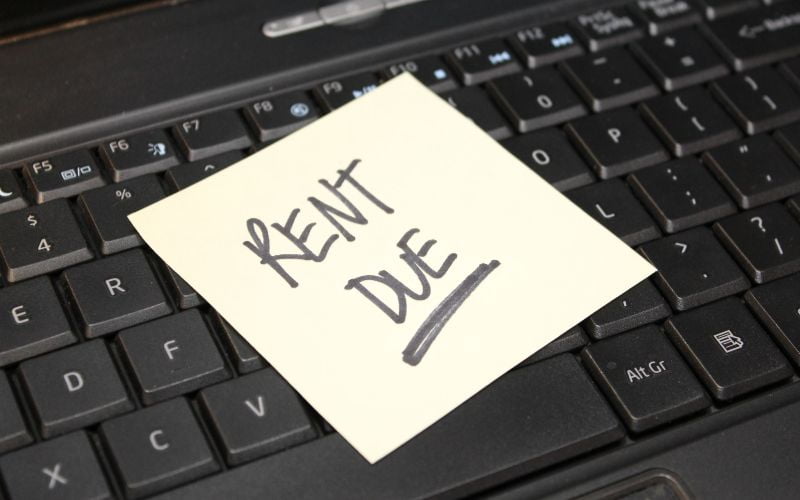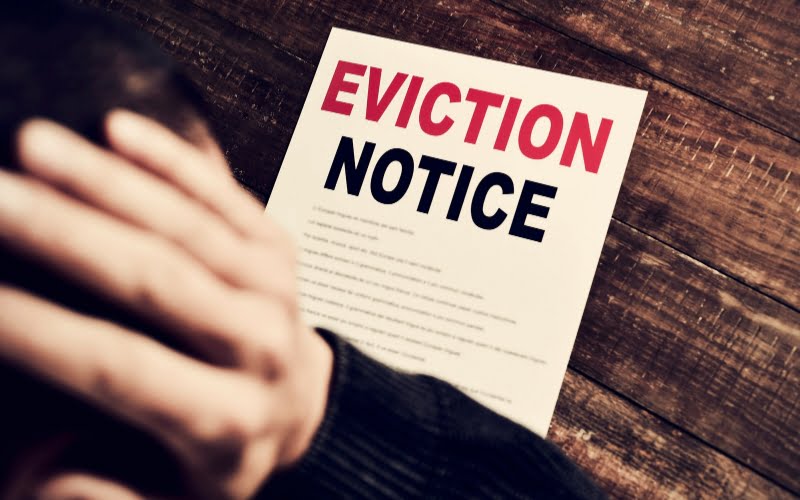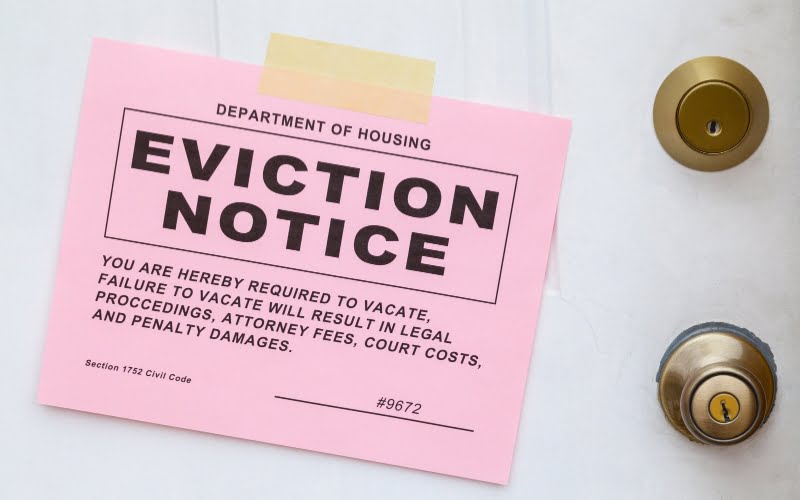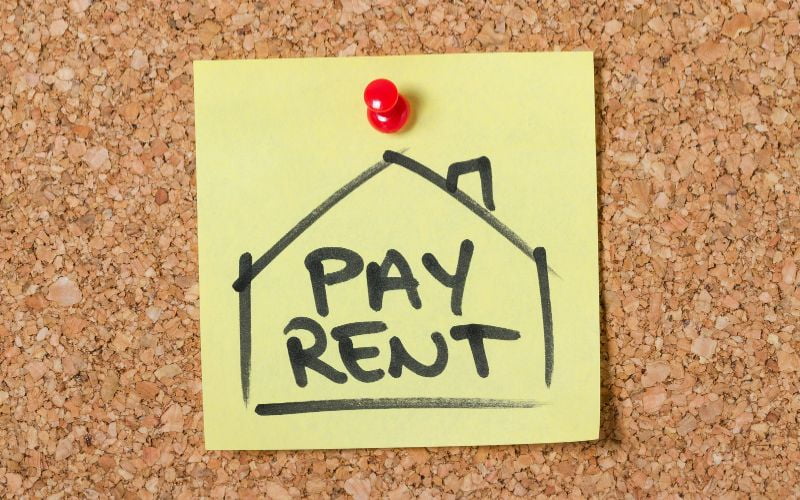Last Updated on March 18, 2024 by Kelvin Nielsen
Are you a landlord and are looking to familiarize yourself with the California eviction process for non-payment of rent? If so, this blog has you covered!
California law (CA Civil Code 1940-1954.06) grants landlords the right to evict a tenant for non-payment of rent. In California, unless the lease says otherwise, rent is due at the start of each pay cycle. It becomes late immediately after the day it’s due.
Now, the California eviction process for nonpayment of rent requires strict adherence to the law. You must not try to engage in illegal eviction methods, such as “self-help” eviction tactics, discriminatory, or retaliatory evictions.
Luckily for landlords in California, the tenant eviction process is pretty straightforward. And it’ll usually take anywhere between 5 to 8 weeks from start to finish, depending on the type of eviction.
In today’s blog, we’ll walk you through everything you need to know when it comes to the California eviction process for non-payment of rent.
California Eviction Process for Non-Payment of Rent
The following is the step-by-step process that you must follow to successfully evict the tenant from your rental property.
Step #1: Serve the tenant with a proper eviction notice.
Under California law, landlords can evict tenants who fail to pay rent on time. To kickstart the eviction process against the tenant, you must serve them a 3-Day Notice to Quit.
This will give the tenant only 3 judicial days to pay the balance due or move out. If the tenant pays within this period, then great! However, if they choose not to and remain on the property, you can go to court and file a lawsuit against them.
Step #2: File a lawsuit in a Superior Court of the county where your property is located.
If the notice period ends and the tenant is still on the property, you can continue with their eviction by filing an eviction lawsuit against them. In court, you’ll need to file an Unlawful Detainer lawsuit.
Make sure to properly fill in all the required information. Including, you and your tenant’s contact info, the property’s location and address, tenancy type, and the ground for eviction. You may also need to attach a copy of the lease, eviction notice, and return receipt for the mailer.
Step #3: Have the tenant served with a copy of the Summons and Complaint.
You have up to 60 days to have the tenant served with a copy of the Summons and Complaint after filing the eviction complaint. If you don’t, you risk having the case dismissed by the court.
Once the service is done by a process server, the tenant will then have a chance to respond to the allegations. The tenant will have five-ten business days to file the answer. In their defense, the tenant may try to stop or delay their eviction by providing any of the following defenses.
- Their eviction was due to their race, color, religion, nationality, or any other protected class.
- The tenant withheld rent payments because of a repair issue.
- The eviction process was illegal. You tried to evict the tenant through illegal means, such as locking them out or removing their personal belongings.
- The eviction process had substantial errors.
- The tenant paid rent on time.
- You refused to acknowledge the rent payment as a retaliatory tactic against the tenant.
If the tenant failed to respond, you can ask the court for a default judgment without having to attend the hearing. However, if the tenant did respond, then you’ll need to file a hearing request.
Step #4: Attend the court hearing.
Typically, eviction hearings in California are held within 20 days of filing a hearing request. But when all is said and done, if the outcome of the hearing is in your favor, you’ll need to obtain a Writ of Execution.
Step #5: Removal of the tenant.
A Writ of Execution is the tenant’s final notice to leave the property. In California, a Writ of Execution gives a tenant up to 5 days to leave. After which, the sheriff will have to forcibly eject them and return possession back to the landlord.
Frequently Asked Questions (FAQs): California Eviction Process for Non-Payment of Rent
Q: Can you evict a tenant for non-payment of rent in California?
A: Of course, non-payment of rent is one of the ‘just causes’ for eviction under California law. Other legitimate reasons for tenant eviction include: lease violation, end of a lease, absence of a lease, and illegal activity. Landlords are also able to evict tenants on a month-to-month lease, as long as the eviction abides by retaliatory and discrimination laws.
Q: How long does it take to evict a tenant for not paying rent in California?
A: Typically, evicting a tenant in California takes around 5 to 8 weeks. However, the process may also take longer due to a number of reasons. Including:
- Failure to abide by the law. In an eviction, a landlord must strictly follow all the laid down procedures. For instance, serving the tenant with a proper eviction notice. Among other things, the notice must state the reason for the eviction, what the tenant must do during the notice period, and the effective date of lease termination if the tenant doesn’t comply.
If the notice fails to include any of the important info, the eviction will fail and you’ll have to restart it again. This will provide your tenant with more time to live on your property.
- The workload of the court. The court system in California is very busy, and is quite common for cases to be backlogged. If you find yourself in this unfortunate circumstance, you may have to wait longer for your case to get heard.
Q: How do I serve an eviction notice for non-payment of rent in California?
A: Well, you have three options to choose from when serving a tenant with an eviction notice. The first option is to deliver the notice to the tenant in person. The second option is to hand the notice to a person of a suitable age at the property AND mail another copy to the tenant’s mailing address via either certified or registered mail.
The other option is to post the notice in a conspicuous place at the property. You must then mail another copy to the tenant’s last known address via either certified or registered mail.
Q: Is a 3-day eviction notice legal in California?
A: Yes! A landlord must use the 3-Day Notice to Quit when looking to evict a tenant for non-payment of rent. The notice gives a tenant 3 judicial days (not including weekends and legal holidays) to pay the balance or vacate the premises.
Q: What rights do tenants have in California?
A: California tenants have a smorgasbord of rights under the statewide landlord-tenant law (CA Civil Code 1940-1954.06). Here is a comprehensive guide on California renters’ rights to get you started.
Conclusion
There you have it – the California eviction process for nonpayment of rent. This step-by-step process will ensure you obtain a court order (Writ of Execution), which is necessary to successfully evict the tenant from your property.
Disclosure: The content herein isn’t a substitute for advice from a professional attorney. It’s only meant to serve educational purposes. If you have a specific question, kindly seek expert attorney services.
Sources: https://leginfo.legislature.ca.gov/, https://www.fastevictionservice.com, https://selfhelp.courts.ca.gov/eviction-landlord,

Hi, I’m Kelvin Nielsen, an experienced landlord and accomplished real estate lawyer. My focus is on answering your questions about renting in the hopes of making your life as a renter or a landlord a bit easier.







